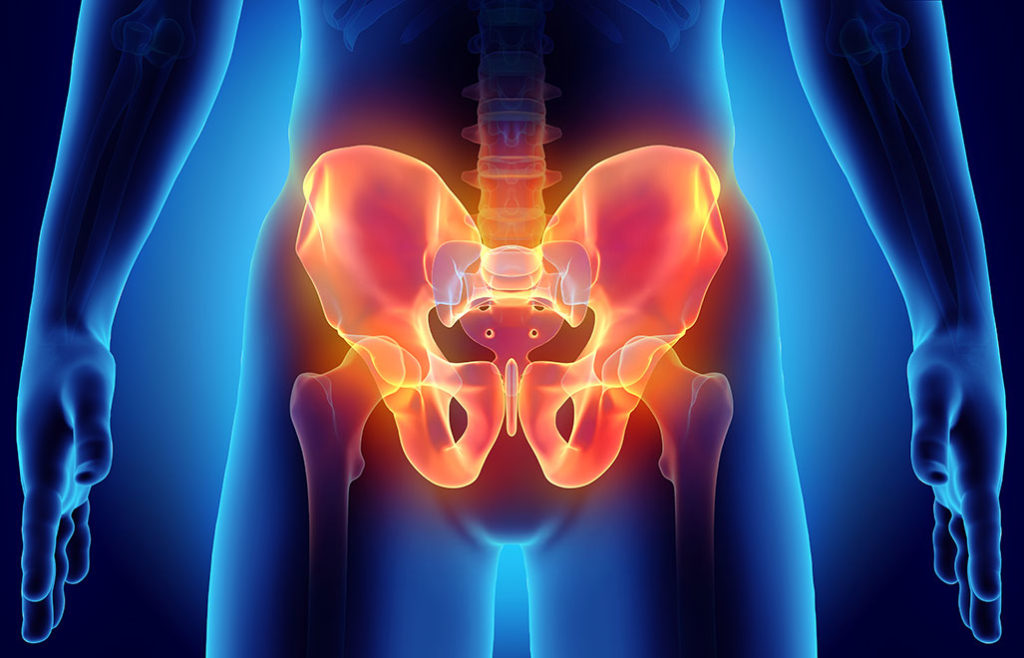Hip & Pelvic Pain
The hip and pelvic region contains 2 of the largest joints in the body; the femoroacetabular and sacroiliac joints. This area of the body serves as a good foundation for both stability and rotational movement to allow for normal gait, sitting tolerance, and standing tolerance. There are some key differences in pelvic shape and size between men and women which has a effect on the lower body movement and dysfunctions that can arise here.
Muscles and joints of the hip and pelvis can be common sources of pain (see Muscle & Joint Pain page). In addition to those, here are some other conditions that physical therapy can help you with:
Femoroacetabular Impingement – This is a condition where impingement or “pinching” of the tissues in the hip joint occurs when it moves. It has similarities to the impingement syndrome that occurs in the shoulder, however, the main cause of FAI is thought to be due to abnormal bone formation in the ball and socket joint of the hip. These bone deformities are listed as 3 types; a CAM deformity where the head of the femur is more oval than round, a PINCER deformity where the socket of the joint has too much overhang, or COMBINED where an individual has both ball and socket deformities. This extra bone prevents normal, smooth motion to occur in the joint and leads to impingement of the soft tissues. The acetabular labrum is often the tissue that gets pinched and this can lead to inflammation or even a tear.
Labral Tear – The femoroacetabular joint is a ball-and-socket joint, like the shoulder. The acetabulum (socket) is surrounded by a fibrocartilaginous structure called the labrum which provides stability and some depth to the joint. Injuries to the labrum can be caused by acute trauma such as motor vehicle accidents, sports injuries, or falls. More often, though, the labrum tears from repetitive irritation and impingement as described above in FAI.
Hamstring tear – The hamstrings are a group of 3 muscles in the back of the thigh. The muscles originate from the ischial tuberosity which is the “sit bone” located in the buttocks and they attach behind the knee. Tears of the hamstring typically occur from sports injuries (sprinting or kicking) or repetitive trauma such as long distance running. Tears in the middle of the hamstring muscle are felt in the middle of the back of the thigh, whereas proximal hamstring tears are felt at the attachment point in the buttocks.
Gluteus medius tear – The gluteus medius is 1 of 3 gluteal muscles and the most likely to be torn out of the 3. It is located on the side of the hip and it plays an important role in stabilizing the pelvis during standing, walking, and running. Tears can come from acute injuries or repetitive traumas which leads to pain in the side of the hip and difficulty with exercise or activities of daily living.
Pelvic Floor Dysfunction – The floor of the pelvis is made up of various muscles and other tissues which act like a sling to support the organs in the pelvis, including the bladder, rectum, and uterus or prostate. The muscles here play a vital role in control of the bowel and bladder as well as sexual function. Dysfunction of the pelvic floor muscles is thought to occur when tightness and/or weakness develops resulting in pain, incontinence, and/or constipation. Pregnancy and child birth is a common contributor to pelvic floor dysfunction, however, both men and women can experience problems with PFD for other reasons.

